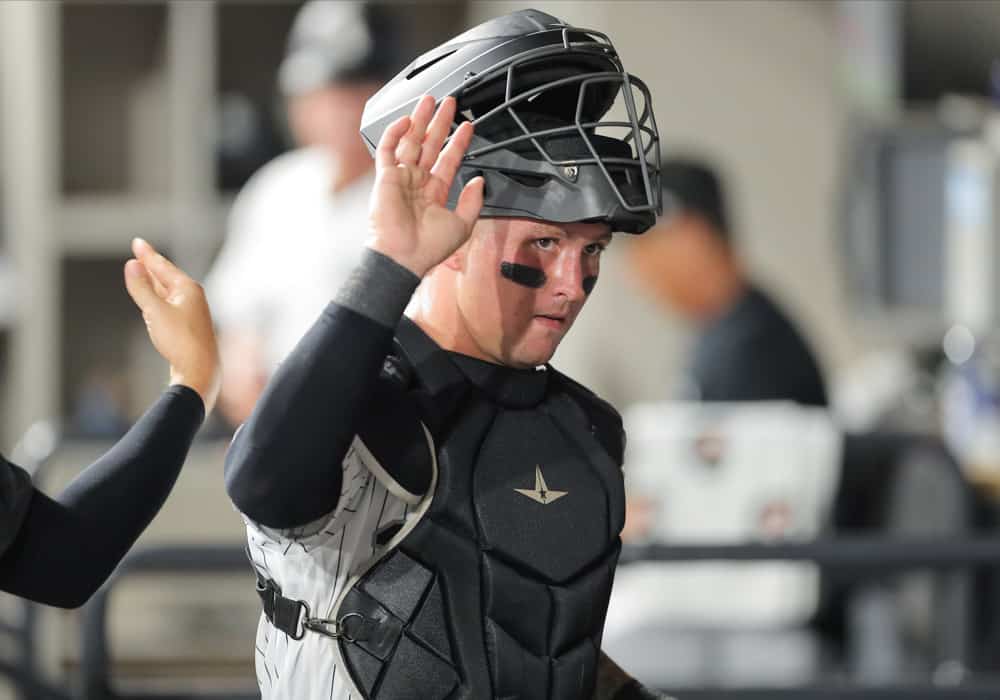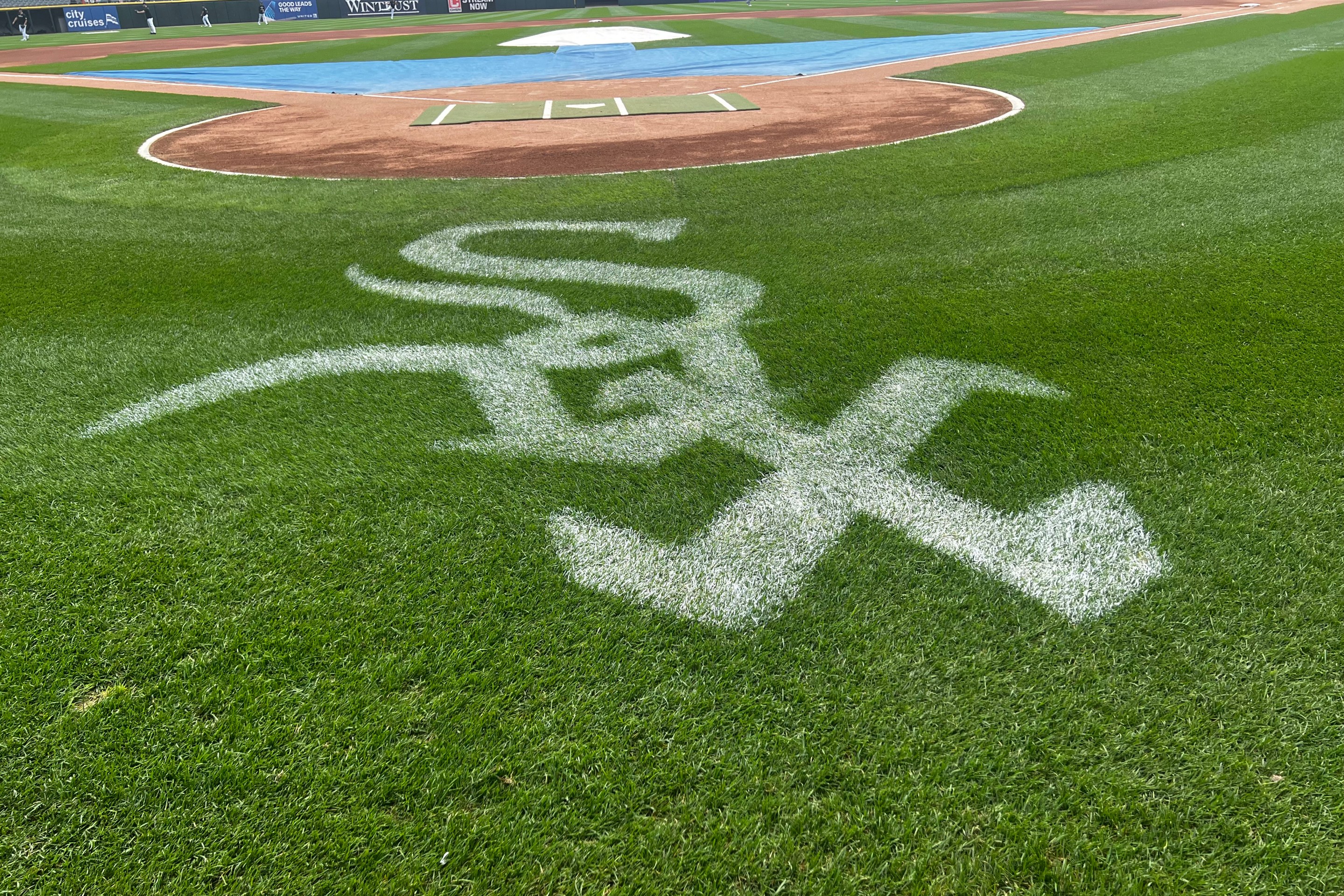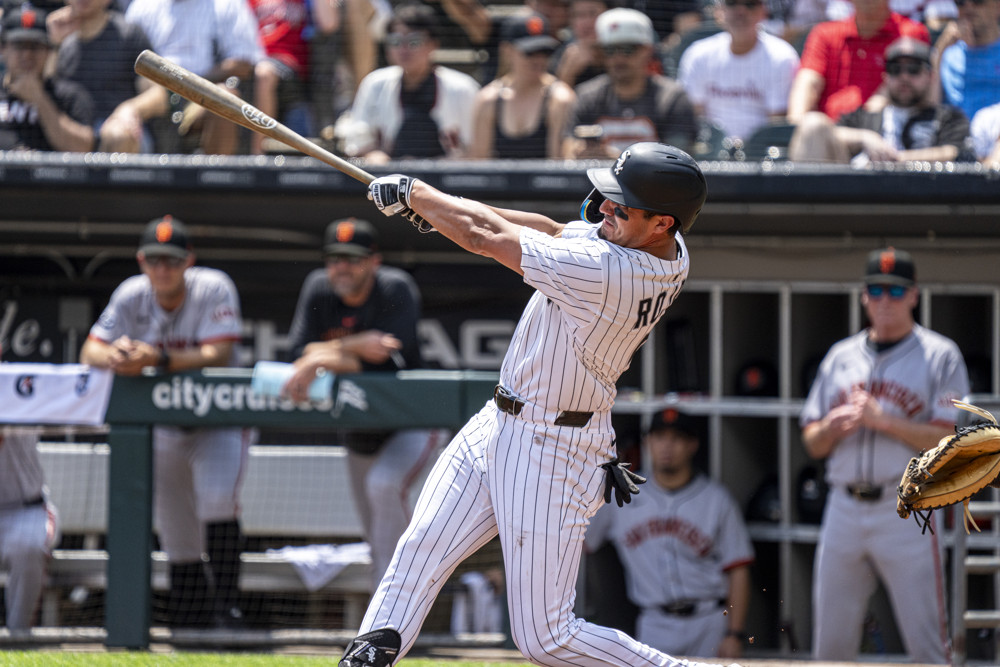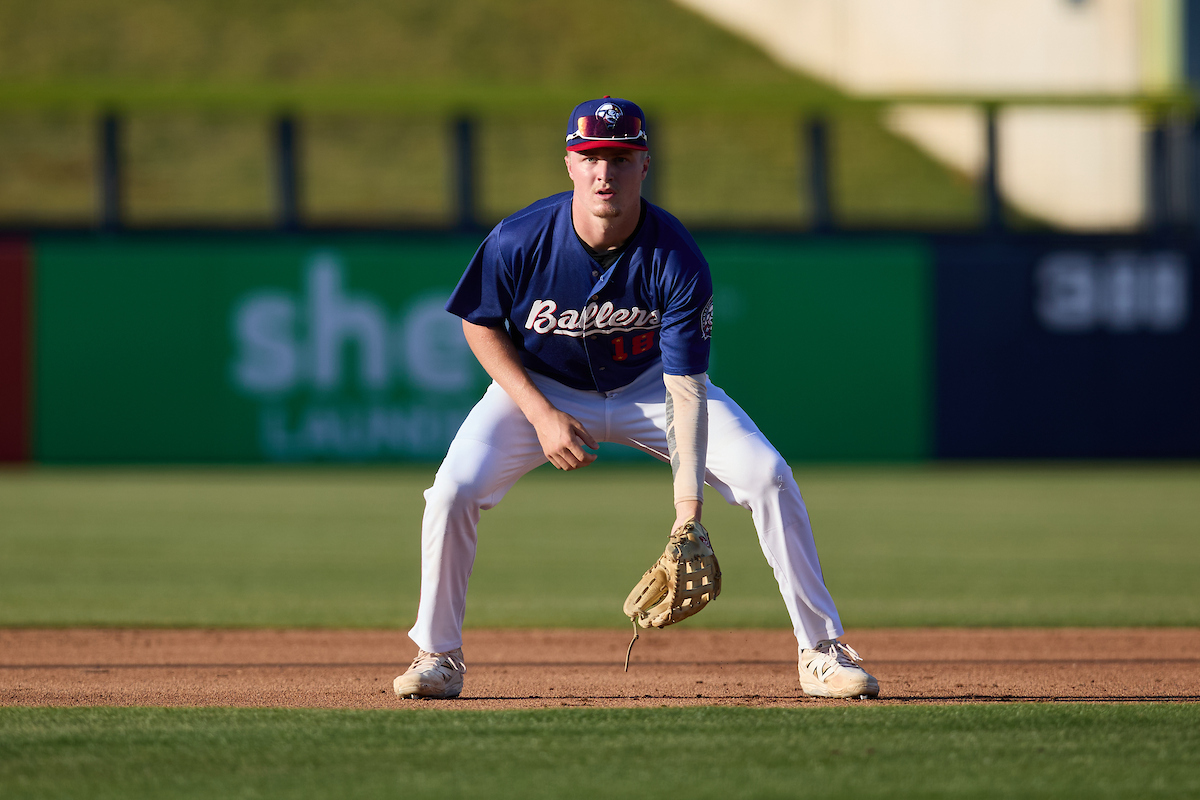The White Sox Opening Day roster continues to come together in a piecemeal fashion. A brief recap of the events over the last few days:
Sunday: The White Sox announced that they signed Kevin Pillar to a major-league deal after releasing him from his minor-league deal two day earlier.
Monday morning: James Fegan assembled half the roster by relaying what he'd heard about the plans for the White Sox's Opening Day pitching staff.
Monday afternoon: The White Sox revealed their backup catcher in the process of announcing an injury. Korey Lee will open the season in Chicago because Max Stassi will open the season on the injured list with left hip inflammation.
As long as those 15 roster spots hold, then it's pretty much down to the choice of utility infielder, and whether the Sox have enough playing time for Gavin Sheets. No matter how it shakes out, I think we have enough information to proceed with our annual Most Essential White Sox list.
Now, we just have to determine what "essential" means for a White Sox team that's crumpled in a heap at the bottom of the alley stairs.
Conducting this exercise over the last several years, we only had to figure out which players had the greatest say in making the postseason, even if the postseason was at least another year away. It's a lot more convoluted now that Chris Getz has turned over more than half of the 40-man roster, and not many of those players can be penciled in to the next good White Sox rosters.
The resulting roster all have individual motivations to produce, but most can be sorted into two distinct buckets rather than one cohesive vision:
- Guys who can make the White Sox more watchable in 2024.
- Guys who can make the White Sox matter beyond 2024.
Debating which is more essential then turns into some sort of philosophical exercise. (If Paul DeJong exceeds expectations and helps the White Sox win 73 games, does he make a sound?)
Here's where I step in out of self-preservation to issue the annual reminder that the rankings don't really matter, and this whole device mostly just gives me a way to articulate expectations for the individuals we're most likely to be watching. As for who's eligible, the only rule is that they have to stand a reasonable chance at playing a game for the 2024 White Sox. That means that players like Noah Schultz and Samuel Zavala don't qualify, even though their performances at the minor-league levels are far more vital to the big picture than those of most of the names below.
Now, let's get into those names below. Last year's rankings are in parentheses; "NR" stands for "Not Ranked," and "NA" stands for "Not Applicable" or "Not Around." Your choice.
The Most Essential White Sox for 2024
No. 43: Bailey Horn (NA)
This one's for all the potential relievers who are on the 40-man but didn't make a meaningful impact on spring proceedings.
(If I were to extend this list beyond Horn & Plenty, you're looking at the Brad Keller/Jake Woodford/Chad Kuhl area of the organizational depth chart, but while the World Wide Web is limitless, attention spans are not.)
No. 42: Adam Hackenberg (NR)
With Stassi's hip problems persisting into another season and Martín Maldonado dealing with plummeting defensive numbers at 37, every catcher in the high minors should be ready for an opportunity to prove himself at the MLB level.
No. 41: Davis Martin (23)
In an ideal world, Martin smoothly recovers from Tommy John surgery and, by the end of the 2024 season, re-establishes the position he held two years earlier. If the typical post-TJ command lag doesn't make him worthy of MLB starts until the first half of the 2025 season, the Sox can deal with it.
No. 40: Jimmy Lambert (20)
Missing just about all of spring training with a shoulder issue with a hazy timeline for the regular season doesn't exactly foreshadow success, especially since he missed lots of last season with an ankle issue. Between the 60-day injured list or a sudden DFA since he's out of options, there are lots of ways he doesn't pitch much.
No. 39: Braden Shewmake (NA)
It's yet to be officially announced whether Shewmake has Shew-made the roster (alternate take: is a Shew-in for Opening Day), but you could pretty much swap in Danny Mendick or Lenyn Sosa or José Rodríguez into this spot, and the stakes would seem the same. There's room for upward mobility if they succeed in a way they haven't before, but there's also a reason why none staked a clear claim to a wide-open position on one of baseball's least impressive rosters.
No. 38: Jared Shuster (NA)
There's a chance that his stock peaked in his draft year with the combination of Wake Forest's reputation for developing pitchers and the COVID cancellation, which is why the Braves threw him into the 5-for-1 Aaron Bummer trade. Still, the White Sox will need all the spare starters who prove worthy of throwing against the wall.
No. 37: Bryan Shaw (NA)
No. 36: Dominic Leone (NA)
If Shaw picks up where he left off by appearing in four-fifths of the White Sox schedule, then he'll feel essential if the sense that essential can sometimes mean integral or mandatory. Leone isn't likely to be as omnipresent, but they're both under contract for a year and don't figure to have huge deadline value, so I'm comfortable bundling them.
No. 35: Deivi García (NA)
García isn't that far removed from his days as a top-100 prospect, and sometimes you see him throw the perfect curveball and understand the excitement. There's a scenario where he's an early success story in the Brian Bannister era, and the Sox still have five years of control left afterward. But he also walked more guys than he struck out last year, so it's even easier to envision a scenario where he's DFA'd in April and some other team claims him.
No. 34: Oscar Colás (14)
No. 33: Zach DeLoach (NA)
Between Dominic Fletcher, Kevin Pillar and Robbie Grossman, the White Sox have enough immediate MLB-caliber options for right field that neither Colás nor DeLoach control their destiny. That said, every attempt to solve right field since the Adam Eaton trade has crumbled at the first exposure to pressure, so there's every incentive to stay ready until it's their turn (to probably crumble).
No. 32: Prelander Berroa (NA)
When the White Sox acquired him in the same Gregory Santos trade that netted DeLoach, Berroa was primed to spend more than half the season in the MLB bullpen, after which we'd see whether he could harness his power slider well enough to pitch in real leverage situations. Then his Cactus League season was cut short after March 11 due to a shoulder issue, so such intrigue/excitement is on hold.
No. 31: Jake Eder (NA)
The Jake Eder trade was allegedly a coup in the White Sox's favor at one point, but then he issued 36 free bases over his first 35 innings in the organization, divided evenly between Birmingham and the Arizona Fall League. Between Tommy John surgery and a foot injury, there's enough reason to think the severity of his struggles was temporary, and he'll be able to restore his top-100 trajectory on the strength of his slider. Except then he didn't pitch a single Cactus League inning due to non-throwing shoulder soreness, so the arrow remains pointing downward.
No. 30: Robbie Grossman (NA)
No. 29: Kevin Pillar (NA)
Maybe Pillar parked in Chris Getz's spot or stole a Scottsdale dinner reservation, but the White Sox ended up working over Pillar for an unspecified dollar amount by briefly cutting him and signing Grossman to a minor-league deal with the intent of fulfilling those same fourth-outfield/right-field platoon duties, so I'm following their cue and conjoining their fates. They might only be around for a year -- if that -- but with Fletcher, DeLoach and Colas all being left-handed, they'll share some responsibility for putting a young outfielder in a position to succeed.
No. 28: Gavin Sheets (24)
Sheets had the spring he needed to have, and now it's just a matter of seeing whether his very narrow skill set will make him consistently rosterable, and then whether he'll have the ability to replicate it during inconsistent MLB playing time. He can be optioned to Charlotte and the White Sox have multiple right right fielders worth run. His existence could be tenuous, except his indestructible constitution always makes him an option.
No. 27: Tim Hill (NA)
No. 26: John Brebbia (NA)
Mid-leverage relievers on one-year deals intended to act as veteran ballast for a highly uncertain bullpen. Brebbia has the advantage of being righty without OOGY tendencies, and he's supposed to be a card, although they're harder to play on a 100-loss team. Ask Derek Holland for details.
No. 25: Tanner Banks (34)
Because he made his MLB debut just two years ago and comes into the season with an option remaining, it's easy to forget that Banks is 32 years old. He may never reach free agency, but struck out over 40 percent of the hitters he faced this spring.
No. 24: Korey Lee (NA)
When the White Sox acquired Lee, he was just about to come off the injured list after an oblique injury. He didn't rediscover his timing at Charlotte, but that didn't stop the White Sox from calling him up and letting him hit .077 in Chicago. Thanks to his own strong spring and Stassi's hip problem, Lee has a chance to overwrite his first impression.
No. 23: Max Stassi (NA)
Entering the season, the hope was that a healthy and unburdened Stassi might be able to establish himself as a catcher worth playing more than Martín Maldonado. Now that a hip issue has him opening the season on the IL for the second straight year, there's now a possibility that he barely plays for the White Sox, whether it's because of the hip, or because a breakout performance by one of the team's younger catchers makes him redundant.
No. 22: Paul DeJong (NA)
Over the last two months of the 2023 season, DeJong hit .129/.128/.183 with zero walks and 34 strikeouts over 94 plate appearances for two teams, which is why he was content receiving any kind of guaranteed major league contract for 2024. The idea is that he's keeping the seat warm for a Colson Montgomery who is playable at shortstop, but in the meantime, he'll be a test case for Getz's theory that investing in defense will make White Sox baseball easier to stomach.
No. 21: Edgar Quero (NA)
Quero doesn't necessarily have to break onto the White Sox roster at any point in 2024, although it'd be cool if his performance made a promotion unavoidable. He doesn't turn 21 until the second day of the minor league season, though, so there's no reason to rush him if the high minors are posing just enough of a challenge, and guys like Lee and/or Hackenberg are worthy enough uses of the playing time behind the plate in Chicago. Quero's job is to make himself an exciting prospect for 2025, and anything earlier is a bonus.





